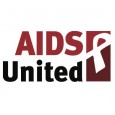House appropriators recently released their spending proposals for the upcoming fiscal year. We are excited to report that congressional leadership is starting to understand what HIV advocates have known for a long time: If we want to end the HIV epidemic, we must invest in the efforts to address the epidemic. Many HIV and harm reduction programs received increases from last year’s funding levels, but the majority of these funding requests are still below HIV advocates’ requests.
For fiscal year 2022, the House Appropriations Committee increased funding by $231 million for the Ryan White HIV/AIDS Program from the levels enacted the previous year, but the amount is still $113 million short of federal HIV advocates’ requests. Across the board, programs funded through Ryan White saw increases, but all consistently remain under what federal advocates requested of Congress.
In a massive win for HIV advocates, House appropriators fully funded the Housing for Persons with AIDS Program. This critical program, funded through the Department of Housing and Urban Development, was at risk due to changes in the formula used to provide cities and states with funding.
I know nothing screams excitement quite like House Appropriations Committee report language, but...
— Syringe Access (@SyringeAccess) July 14, 2021
House appropriators just provided a $56.5 million increase to the CDC’s Opioid Related Infectious Diseases line!
This. Is. Huge. #HarmReduction #InvestInPeopleWhoUseDrugs pic.twitter.com/yBgLDoKWcA
In a big win for harm reduction advocates, House appropriations added an additional $56.5 million increase to the Center for Disease Control and Prevention’s Infectious Diseases and Opioid Epidemic Program to expand the use of syringe service programs and other evidence-based drug user health services. When a staggering 93,000 Americans have died from drug overdoses in 2020 — an increase of nearly 30 percent — syringe services programs have never been more vital. We are hopeful that the additional funding from Congress will allow for this evidence-based practice to expand and be supported all across the country.
One of the programs that were given a major boost by House appropriators, but which still needs more support, is the AIDS Education and Training Centers, which provide tailored, data-driven training and support to local health care professionals caring for people living with HIV. House appropriators increased its funding by $11 million from 2021 levels, the first significant increase in a decade. With many of those living with HIV whose life’s work has centered around helping others living with HIV reach retirement age, it is critical that these training centers receive the funding they need.
The House appropriations committee also excluded the Hyde and Weldon Amendments from their versions of the appropriation bills. The Hyde Amendment banned the use of federal funds to be used to pay for abortion-related services, meaning that those who received Medicaid were unable to use their health coverage to cover the cost of abortions. The Weldon Amendment allowed providers’ personal beliefs to interfere with the care and treatment of patients. These amendments disproportionately impact women of color and those who do not often have equal access to health care. Its exclusion from the appropriations bills is critical to protecting the right to comprehensive sexual wellness care.
We still can put pressure on members of Congress to ensure these critical programs are funded at their full levels. To send a letter to your senator asking them to fully fund vital programs for people living with and vulnerable to HIV like AIDS Education and Training Centers, visit our website.
House and Senate appropriations committees have the power to determine how much funding assists people living with HIV, how much funding can go to help those vulnerable to HIV and even how much funding goes into HIV research.
And they need to hear from us. Do your part and help us end the HIV epidemic by sending a letter to your member of Congress asking them to fund these critical programs.








1 Comment
1 Comment